 W
WAutumn Dew, also known as Whirlwind Victory, was one of Emperor Taizong's warhorses. According to historical records, he was being ridden by the emperor during a great siege when an arrow pierced the horse's breast, and the emperor was forced to exchange horses with his general, Qiu Xinggong. Autumn Dew is believed to be one of the horses portrayed in the stone reliefs known as the Six Steeds of Zhao Mausoleum, in which a man, possibly Qiu Xinggong, is shown removing the arrow. The six reliefs commissioned by Taizong for his mausoleum were placed outside his tomb on an altar meant for memorial ceremonies. In 1914, American smugglers broke apart two reliefs, one of which was Autumn Dew, and shipped them back to the country, where they are now in the possession of Penn Museum.
 W
WOld Baldy was the horse ridden by Union Major General George G. Meade at the Battle of Gettysburg and in many other important battles of the American Civil War.
 W
WBeechwold Chester was a stallion owned by the United States Army Remount for breeding purposes.
 W
WBlackie (1907-1942) was a horse in service with the British Army during the First World War. His grave became a grade II listed monument in 2017.
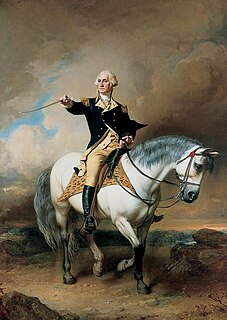 W
WBlueskin was a gray horse ridden by George Washington. He was one of Washington's two primary mounts during the American Revolutionary War. The horse was a half-Arabian, sired by the stallion "Ranger", also known as "Lindsay's Arabian", said to have been obtained from the Sultan of Morocco. Blueskin was a gift to Washington from Colonel Benjamin Tasker Dulany of Maryland. Dulany married Elizabeth French, a ward of Washington's, who gave her away at her wedding to Dulany on February 10, 1773.
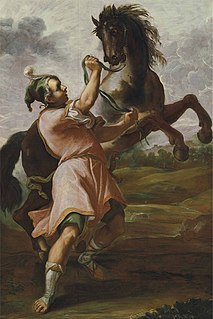 W
WBucephalus or Bucephalas was the horse of Alexander the Great, and one of the most famous horses of antiquity.
 W
WChetak or Cetak is the name given in traditional literature to the horse ridden by Maharana Pratap at the Battle of Haldighati, fought on 18 June 1576 at Haldighati, in the Aravalli Mountains of Rajasthan, in western India.
 W
WThe horsemanship of Ulysses S. Grant has been widely acclaimed by his contemporaries and historians as among the most exceptional in American history. Ulysses S. Grant was a commanding general during the Civil War and a two-term U.S. President. Born in Ohio near the Ohio River, Grant grew up around horses, which he came to admire and love, possessing a natural affinity, allowing him to ride, train and manage horses at an early age. His father Jesse placed much confidence in his ability and gave him tasks involving horses that were rarely ever expected of a youth. At age five he was noted for doing difficult stunts bareback and soon after was also performing responsible chores, hauling timber, and driving teams of horses for long distances by himself. From boyhood through his military career, Grant had a well established reputation for training and managing horses. As a youth, neighbors would have him train hard to manage horses. As a cadet he set a high-jump record at West Point that stood for a quarter-century.
 W
WComanche was a mixed-breed horse who survived George Armstrong Custer's detachment of the United States 7th Cavalry at the Battle of the Little Bighorn.
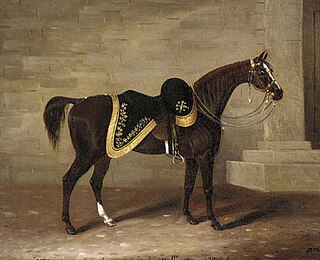 W
WCopenhagen was the Duke of Wellington's war horse, which he most famously rode at the Battle of Waterloo. Copenhagen was of mixed Thoroughbred and Arabian parentage, with his dam being sired by The Derby winner John Bull and his sire Meteor finishing second in the Derby. Copenhagen was foaled in 1808 and was named in honour of the British victory at the Second Battle of Copenhagen. Copenhagen did race in England for a short period, winning two races and finishing at least third in nine races out of his 12 career starts. Copenhagen was sent to Spain with Sir Charles Vane in 1813 and was then sold to the Duke of Wellington. Becoming his favourite, Copenhagen was the Duke's mount in the Battle of Waterloo. The horse was retired to the Duke's estate Stratfield Saye House and lived there for the remainder of his life, dying on 12 February 1836 at the age of 28 years. His grave site is marked with a marble headstone that is situated under a Turkey Oak planted in 1843.
 W
WThe General was a horse owned by US President John Tyler. When he died, John Tyler had The General buried on his Sherwood Forest Plantation, in the Sherwood Forest Pet Cemetery.
 W
WKasztanka was the famous mare that belonged to interwar Poland's leader, Marshal Józef Piłsudski.
 W
WKennedy is an American Standardbred horse who was owned by the United States Army.
 W
WKlinger is a horse owned by the United States Army. An inductee into the Horse Stars Hall of Fame, as of 2017 he was posted to Washington, D.C.
 W
WMarengo was the famous war horse of Napoleon I of France. Named after the Battle of Marengo, through which he carried his rider safely, Marengo was imported to France from Egypt following the Battle of Abukir in 1799 as a six-year-old. The grey Arabian was probably bred at the famous El Naseri Stud. Although small he was a reliable, steady, and courageous mount.
 W
WNelson or Old Nelson was George Washington's horse and one of several horses owned by Washington. He was a chestnut with a white blaze and white feet. The horse was acquired by Washington in 1779 and died in 1790 at about the age of 27, quite old for a horse in that era. As Washington was known for being a skilled horse rider, Nelson was a significant icon for a number of years, being one of Washington's favorite horses.
 W
WPalomo was Simón Bolívar's horse. It accompanied him on most of his campaigns of national liberation. The horse was white, tall, with a tail that almost reached the ground. It was a gift from an elderly peasant woman from Santa Rosa de Viterbo, Boyacá Department, shortly before the Battle of Boyacá in 1819.
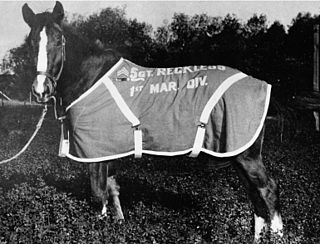 W
WStaff Sergeant Reckless, a decorated war horse who held official rank in the United States military, was a mare of Mongolian horse breeding. Out of a race horse dam, she was purchased in October 1952 for $250 from a Korean stableboy at the Seoul racetrack who needed money to buy an artificial leg for his sister. Reckless was bought by members of the United States Marine Corps and trained to be a pack horse for the Recoilless Rifle Platoon, Anti-Tank Company, 5th Marine Regiment, 1st Marine Division. She quickly became part of the unit and was allowed to roam freely through camp, entering the Marines' tents, where she would sleep on cold nights, and was known for her willingness to eat nearly anything, including scrambled eggs, beer, Coca-Cola and, once, about $30 worth of poker chips.
 W
WThe Red Hare or Chi Tu was a famous horse owned by the warlord Lü Bu, who lived during the late Eastern Han dynasty of China.
 W
WSergeant York is a horse owned by the United States Army.
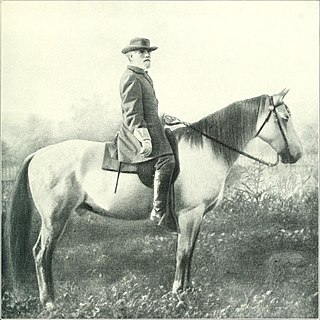 W
WTraveller (1857–1871) was Confederate General Robert E. Lee's most famous horse during the American Civil War. He was a grey American Saddlebred of 16 hands, notable for speed, strength and courage in combat. Lee acquired him in February 1862, and rode him in many battles. Traveller outlived Lee by only a few months, and had to be shot when he contracted untreatable tetanus.